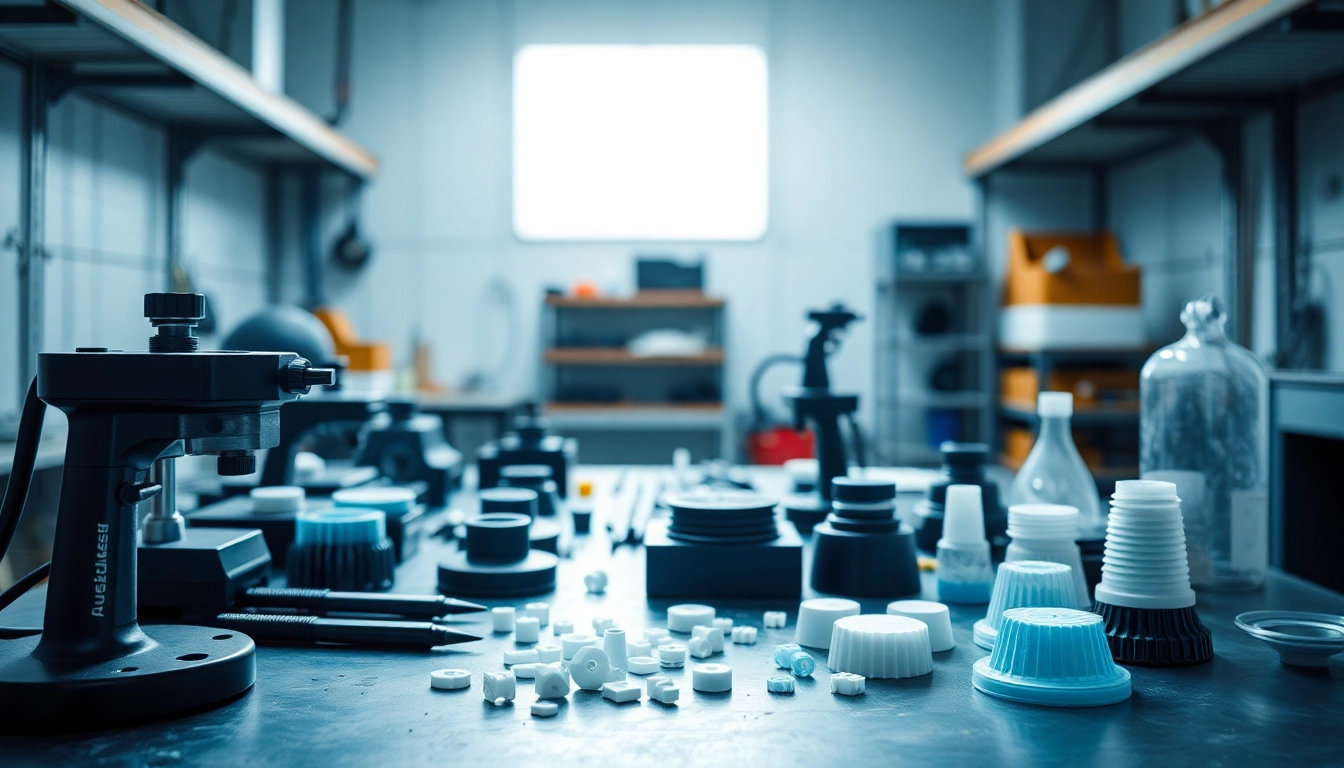Understanding the Role of a Mold Maker for Injection Molding
In the ever-evolving landscape of manufacturing, the role of a mold maker for injection molding is pivotal. Mold making isn’t just a matter of engineering; it’s a blend of creativity, precision, and technological adeptness. Whether you’re looking to optimize production lines or ensure product quality, the mold maker becomes key to your success.
Definition and Overview of Mold Making
Mold making refers to the fabrication of molds that are primarily used in producing plastic parts through injection molding. In this process, molten plastic is injected into a hollow mold, which is later cooled and solidified into the desired shape. The creation of these molds is vital, as they dictate the quality, precision, and production cycle of the final product.
Essential Skills of a Professional Mold Maker
A proficient mold maker must possess a blend of technical skills and practical knowledge. These include:
- Technical Proficiency: The ability to operate CNC machines and EDM (Electrical Discharge Machining) tools is crucial.
- Mechanical Aptitude: Understanding mechanical designs and being able to read blueprints is necessary for accurate mold creation.
- Problem-Solving Skills: The ability to troubleshoot and resolve issues that arise during the mold-making process is vital.
- Attention to Detail: Precision is paramount in mold making; even a minor error can result in significant production issues down the line.
Types of Molds Used in Injection Molding
Different types of molds are utilized in injection molding, each designed for specific applications:
- Single-Cavity Molds: Designed for producing one part per cycle, ideal for low-volume production.
- Multi-Cavity Molds: These molds contain several cavities allowing for multiple parts to be produced simultaneously, enhancing efficiency.
- Family Molds: Capable of producing different parts simultaneously, family molds are beneficial when parts require varying designs.
- Hot Runner Molds: These molds maintain the plastic in a molten state until injection, reducing material waste and improving efficiency.
Key Factors in Selecting a Mold Maker for Injection Molding
Choosing the right mold maker is critical for ensuring the smooth operation of the production process and the quality of the end products. Here are some vital factors to consider:
Evaluating Experience and Technical Expertise
The experience of a mold maker can often be the deciding factor in the success of your project. Look for a mold maker with a proven track record, ideally with years of hands-on exposure to molding processes. Their expertise should encompass not only traditional molding techniques but also modern methodologies such as 3D modeling and rapid prototyping.
Assessing Quality Standards and Certifications
Quality assurance is paramount in the injection molding industry. Verify whether the mold maker adheres to internationally recognized quality standards such as ISO 9001. Certifications not only ensure that the molds meet certain performance criteria but also demonstrate the commitment of the mold maker to quality manufacturing processes.
Importance of Customer Support and Communication
Effective communication is essential throughout the mold-making journey. A reliable mold maker should maintain clear lines of communication, offering prompt responses to inquiries and updates on project progress. Consider evaluating their customer service track record through testimonials or reviews from previous clients.
Cost Considerations When Hiring a Mold Maker
Being aware of the financial implications of hiring a mold maker can help you make an informed decision:
Understanding the Price Range for Injection Molds
The costs associated with injection molds can vary significantly depending on various factors such as complexity, size, material, and production volume. Generally, you can expect to spend anywhere from $3,000 for simple molds to over $100,000 for intricate, multi-cavity molds used in high-volume production.
Factors Affecting the Cost of Mold Making Services
- Complexity of the Design: More complex designs require more time and resources to produce, raising overall costs.
- Material Selection: The type of material used for the mold affects the cost significantly, with steel molds being more expensive than aluminum molds due to durability.
- Production Volume: Larger production volumes help spread the mold cost over more units, making it more economical per part.
- Lead Times: Rushed jobs often incur higher costs due to expedited services.
Long-Term Value vs. Initial Investment
While the upfront cost of hiring a mold maker might be high, consider the long-term value it brings. High-quality molds can lead to fewer defects, reduced waste, and increased production efficiency, eventually offsetting the initial investment. Evaluate the total cost of ownership versus short-term savings to align your budget effectively.
Innovative Techniques in Mold Making for Injection Molding
Innovation is at the heart of modern mold making. Here, we explore some cutting-edge techniques that are shaping the industry:
Utilizing CNC Machining and EDM Technology
CNC (Computer Numerical Control) machining and EDM have transformed mold making by introducing precision and efficiency. CNC machines create molds with extreme accuracy and repeatability, making them invaluable for complex designs. On the other hand, EDM technology allows for the precise removal of material from hard metals, enabling intricate shapes that are difficult to achieve through traditional machining methods.
Advancements in Materials for Injection Molds
The choice of materials used in mold making is evolving, with advancements leading to higher performance and durability. Modern molds may utilize advanced alloys or composite materials which can withstand higher temperatures and pressures, making them suitable for a wider range of applications. This not only enhances the lifespan of the molds but also reduces downtime and maintenance costs.
Trends in 3D Printing for Custom Mold Solutions
3D printing has emerged as a game-changer in mold making, particularly for prototyping and low-volume production. Additive manufacturing allows for the rapid development of custom molds, enabling designers to iterate swiftly on mold designs without the need for extensive lead times. This flexibility helps businesses experiment with new products without substantial financial commitments. Additionally, 3D-printed molds can sometimes be used directly, reducing the time from concept to production.
Case Studies: Successful Projects with Expert Mold Makers
Studying successful projects offers valuable insights into the practice of effective mold making. Here are some compelling cases:
High-Volume Production Scenarios
One notable case involved a leading automotive supplier that required high-volume plastic parts for their vehicle models. By collaborating with an experienced mold maker specializing in multi-cavity molds, they were able to enhance their production efficiency significantly. The mold maker utilized advanced CNC machining and implemented rigorous quality checks, resulting in reduced scrap rates and shorter lead times, which ultimately improved the supplier’s competitive edge in the market.
Custom Solutions for Unique Product Requirements
In another case, a company sought a mold maker to design a custom mold for an innovative consumer electronic device. The challenge was to create intricate geometric shapes that allowed for both aesthetics and functionality. Working closely with the mold maker, they achieved rapid prototyping through 3D printing, leading to a mold that met all design specifications. The resulting parts exceeded performance expectations and resonated well with consumers, indicating the value of expert input in unique scenarios.
Lessons Learned from Industry Leaders
Industry leaders often stress the importance of collaboration and communication with mold makers. Continuous feedback during the design phase can minimize errors and reduce the time to market. Companies that foster these collaborative relationships often find enhanced innovation and higher quality outputs, emphasizing that selecting the right mold maker transcends simply evaluating experience or cost.







